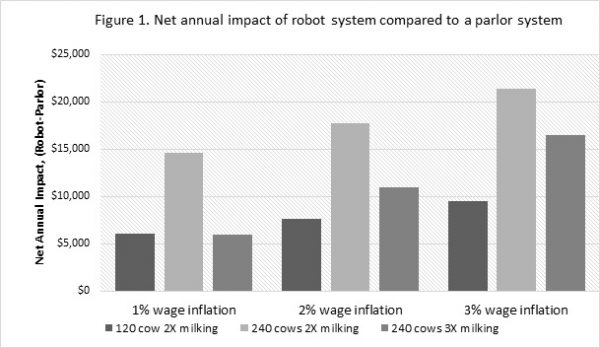A cow making 85 lbs is costing you money. A cow making 75 lbs is driving profit. Robot economics don’t work like you think.
Executive Summary: The metric you were sold on—milking frequency—has surprisingly little to do with whether your robots actually pay off. Six years of industry data points to a different number: efficiency, measured as kilograms of milk per minute of robot time. ICAR research benchmarks profitable operations at 1.86 kg/min, and farms falling short struggle regardless of strong bulk tank numbers. Here’s the uncomfortable math: an 85-lb producer hogging 45 minutes of box time costs you money, while a 75-lb cow with 25-minute turnover drives real profit. This analysis delivers five metrics worth tracking daily, a 90-day turnaround protocol, and an honest framework for determining whether your struggles are management problems you can fix—or structural and economic realities that require harder decisions.
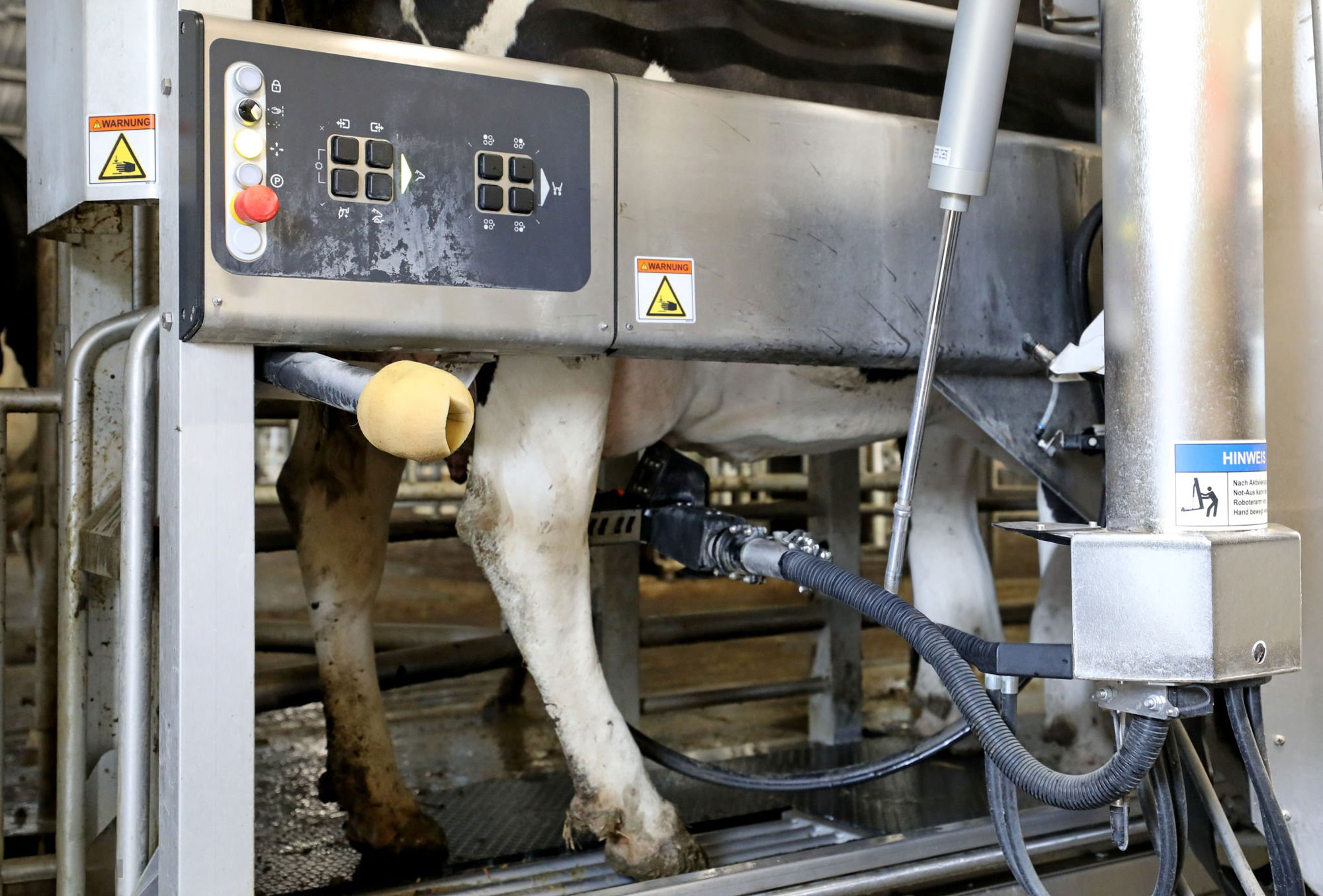
You know that conversation that happens at coffee shops near dairy country? The one where a producer leans in and says something like, “They told me three to four years to payback. I’m at year six, and I’m still waiting.”
I’ve been hearing variations of this for the past eighteen months. What strikes me isn’t the frustration—that’s understandable when you’ve invested somewhere between $150,000 and $275,000 per unit in technology that hasn’t delivered on the sales projections. What’s interesting is what separates the producers who’ve turned things around from those still treading water.
It comes down to a single insight, and it’s surprisingly counterintuitive: the farms thriving with automation have largely stopped obsessing over milking frequency.
The Sales Pitch vs. The Reality

Let’s be direct about this. For years, the robotic milking industry pushed frequency as the golden metric. Get your cows visiting 2.9 times daily. Push for 3.0 if you can manage it. The reasoning seems solid enough—more milkings should translate to more milk.
Here’s what the early sales conversations often missed: the correlation between frequency and profitability is far weaker than the pitch implied.
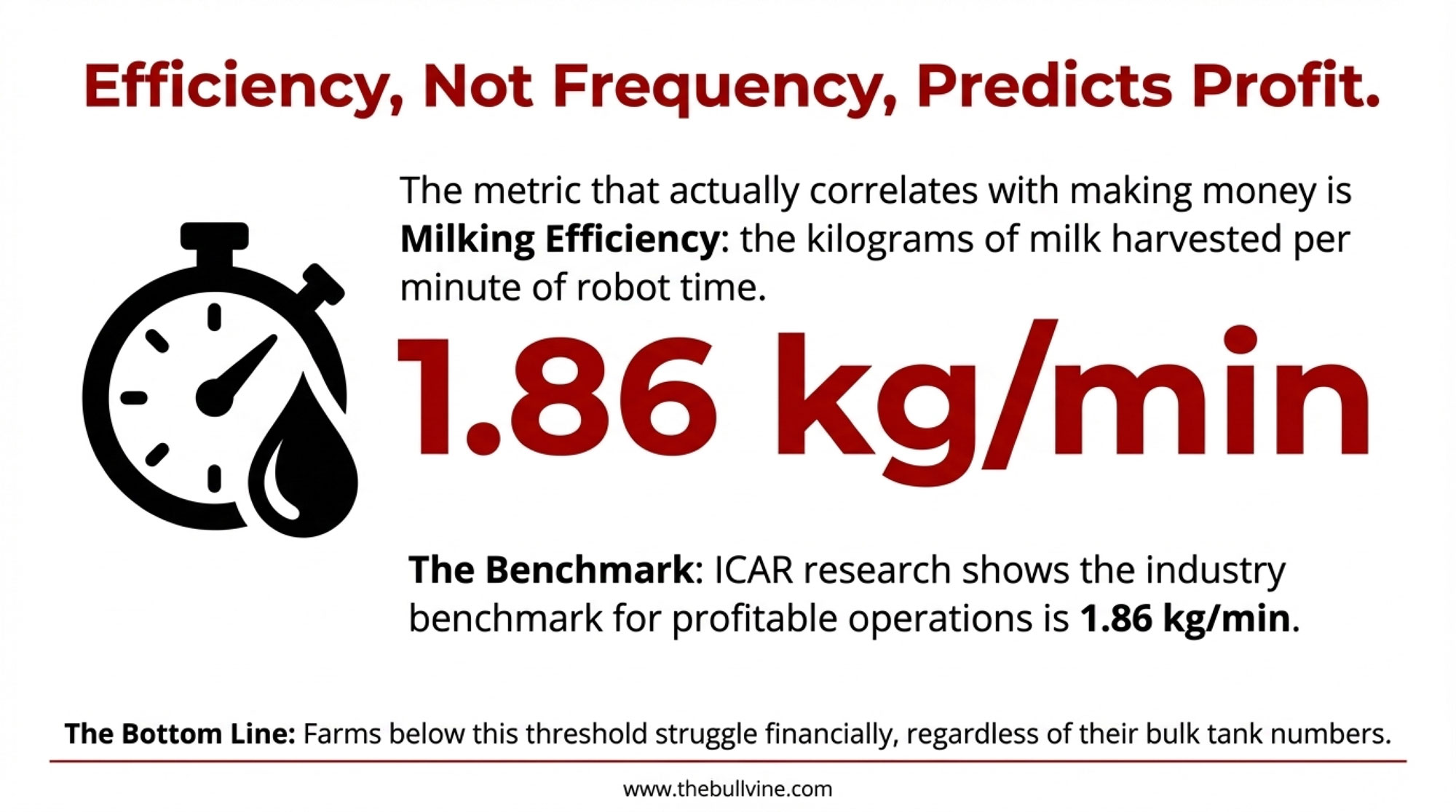

| Efficiency (kg/min) | Net margin (USD/cow/day) | Frequency (visits/day) |
|---|---|---|
| 1.20 | -1.50 | 2.9 |
| 1.40 | -0.75 | 3.0 |
| 1.60 | 0.25 | 2.8 |
| 1.86 | 1.50 | 2.9 |
| 2.00 | 2.10 | 2.7 |
| 2.20 | 3.00 | 2.8 |
What actually correlates with making money? Something called milking efficiency—the kilograms of milk harvested per minute of robot time. Dr. Débora Santschi, who directs Lactanet Canada’s R&D team and has been working with dairy data since 2010, has been central to tracking these patterns. Research presented through ICAR’s technical series in Montreal shows that average milking efficiency runs around 1.86 kg milk per minute of box time—but the variation between high and low performers is where fortunes are made or lost.
To be fair, the conversation is evolving. I’ve spoken with several Midwest dealers who now lead with efficiency metrics rather than frequency targets—a welcome shift that suggests the industry is catching up to what producers have learned the hard way. But if you bought your system five or six years ago, you probably got the older playbook.
The bottom line: When consultants work with producers to improve robot economics, frequency is rarely the limiting factor. It’s almost always about capacity utilization.
Think about it. A robotic milking system only has so many minutes of available milking capacity per day. That number doesn’t expand based on how hard you push—it’s the fixed resource that every management decision operates within. Whether you’re running a 120-cow operation in Wisconsin or a 300-cow herd in California, the math is unforgiving.
What Efficient Operations Actually Look Like
I’ve spent time visiting farms in Ontario, Wisconsin, and the Central Valley that have figured this out. The differences are more subtle than you might expect—and they have nothing to do with hitting frequency targets.
Here’s a pattern I’ve seen repeatedly: A mid-sized operation installs robots, focuses intently on increasing frequency, and hits that 2.9 visits per day target within the first year. The bulk tank looks good. But payback doesn’t materialize.
What changes things? Shifting attention to box time—the total minutes each cow spends in the robot per visit.
Once farms start tracking this metric, they discover enormous variation within their herds. Some cows are in and out in five minutes flat. Others are taking 9, 10, sometimes 11 minutes for essentially the same milk yield.
I recently spoke with an Ontario producer who put it this way: they had maybe 15 cows using 20% of their robot capacity while contributing maybe 8% of their milk.
“Once you see that math, you can’t unsee it.”
A Wisconsin producer I visited last fall told me something similar. He’d been chasing 3.0 visits per day for two years before his nutritionist suggested looking at individual cow efficiency. “I had cows I was proud of—good production, no health issues—that were killing my robot economics. That was a hard conversation with myself.”
The University of Wisconsin’s Dairy Brain initiative has been systematically documenting these patterns. Their work integrating AI and real-time sensor data suggests that systematic attention to individual cow efficiency metrics—rather than herd-average frequency—may be among the stronger predictors of robot profitability.

The Five Numbers That Actually Predict Profitability
Dr. Marcia Endres at the University of Minnesota makes a point that cuts through the noise: milk yield tells you what happened yesterday. The metrics that matter tell you what’s about to happen.
Here’s what the most profitable robot farms are watching daily:
| Metric | Target | Why It Matters |
| Milking Efficiency | Above 1.86 kg/min | Farms below this threshold struggle financially regardless of production numbers |
| Incomplete Milking Rate | Below 5% | Above 8-10%, cascading effects on udder health and capacity compound rapidly |
| Fetch Rate | Below 5-8% | Lame cows are 2.2x more likely to need fetching—this is your lameness early warning |
| Individual Cow SCC Trends | Stable or declining | Three consecutive rising tests signals trouble before production drops |
| Frequency by Lactation Stage | 3.0-3.2 (fresh) / 2.4 (late) | Blanket targets waste capacity on cows that don’t need it |
Key insight on regional economics: Operations in California or the Northeast may need to hit the upper end of efficiency targets to achieve margins similar to those of Midwest producers. Labor costs and milk prices shift the math significantly.
Software note: Lely Horizon, DeLaval HerdNav, and GEA DairyPlan can all generate efficiency reports, but you may need to set up custom calculations to track kg/minute specifically.
The Efficiency Gap: A Tale of Two Cows
This is where robot economics get uncomfortable—and where the biggest opportunities hide.
Traditional culling focuses on production. A cow making 85 pounds daily seems like a keeper. A cow making 75 pounds seems like a candidate for the truck.
Robot economics flip this completely.
| Metric | Cow A: “The Capacity Thief” | Cow B: “The Profit Driver” |
| Daily Yield | 85 lbs | 75 lbs |
| Total Daily Box Time | 45 minutes | 25 minutes |
| Efficiency | 0.85 kg/min | 1.36 kg/min |
| Robot Capacity Used | 3.1% of daily capacity | 1.7% of daily capacity |
| Verdict | Looks good on paper, costing you money | Lower production, stronger profit |
The math that changes everything: Cow A consumes robot capacity that could support an additional partial cow’s production. Multiply this across your herd’s bottom 10-15% of efficiency performers, and you’re looking at 5-6 additional efficient animals you could be milking.
Research documented in ICAR’s technical series confirms this variation is “very high” across and within lactations. Some animals take twice as long as others for similar yields.
The hard truth: These aren’t sick cows. They’d do fine in a conventional parlor. They’re just not suited for robots—usually due to teat placement, milking speed, genetics, or temperament. Some producers find alternative markets rather than processing them. But keeping them is costing you money every day.

The Hidden Cost of Incomplete Milkings

A failed attachment or mid-milking kickoff doesn’t just cost you that session’s milk. Research from the Swedish University of Agricultural Sciences found effects lasting up to ten days:
- Elevated SCC for several days following incomplete milking
- Reduced voluntary returns from stress response
- Cascading capacity loss as problem cows consume more management time
The annual cost difference between 5% and 15% incomplete rates can reach tens of thousands per robot when you factor in production loss, health effects, and labor.
What the top farms discovered: Stop treating failures as random events. Track them by individual cow—same as you’d track breeding outcomes or health events. Patterns emerge fast. A handful of animals typically cause the majority of incidents.
| Common Cause | Root Issue | Solution Path |
| Failed attachments | Teat placement/udder conformation | Genetic selection over time; culling chronic offenders |
| Kickoffs | Liner/vacuum issues OR pain | Equipment check first, then lameness/teat-end evaluation |
| Early exits | Interval settings mismatch | Adjust individual cow permissions |
The 90-Day Turnaround Protocol
For farms recognizing they’ve been chasing the wrong metrics, here’s the focused improvement pathway that’s working:
Month 1: Diagnosis
- Pull historical efficiency data
- Rank every cow by efficiency ratio
- Identify your worst capacity thieves
- Document incomplete milking patterns by individual animal
Month 2: Execution
- Cull or beef-breed the bottom 10-15% efficiency performers
- Aggressive lameness intervention (watch fetch rate drop)
- Adjust milking permissions by lactation stage
- Address equipment issues causing incomplete milkings
Month 3: Systematization
- Write protocols that survive staff turnover
- Establish weekly efficiency review routines
- Create accountability for the metrics that matter
Realistic expectations: Meaningful efficiency gains within the quarter. Full payback recovery typically takes another 12-18 months of sustained attention. This isn’t a quick fix—but it’s a proven path.

When the Robot Isn’t the Problem
Here’s what doesn’t get discussed enough: not every struggling operation can be fixed solely through management.
The Australian dairy industry’s Milking Edge project—a four-year initiative through NSW Department of Primary Industries—tracked commercial installations and found success depends heavily on factors beyond equipment:
- Facility design limitations (retrofit constraints that can’t be managed away)
- Herd genetics (some populations aren’t well-suited for robots)
- Unrealistic initial expectations set during the sales process
- Management capacity for data-driven decision making
Equipment failure was rarely the primary cause of struggling operations.
Dairy facility specialists have long observed: the robot doesn’t create your management system—it reveals the one you already have.
For producers underwater for multiple years despite genuine effort, honest assessment matters:
| Challenge type | Typical symptoms | Diagnostic question | Path forward |
|---|---|---|---|
| Management | Wide cow-to-cow efficiency spread, high fetch & incomplete rates | Have we ever run a focused 90-day efficiency protocol? | Tighten protocols, cull bottom 10–15%, own the data |
| Structural | Chronic traffic jams, awkward retrofits, robots boxed in by layout | Would a blank-sheet design ever choose this traffic pattern? | Cost out redesign vs. living with permanent bottlenecks |
| Economic | Decent efficiency but margins still thin or negative year after year | If this herd were in the Midwest, would it be profitable? | Rethink long-term viability and regional strategy |
The Industry Is Getting More Honest
The robotic milking conversation is maturing. I’m seeing more nuanced guidance from universities—less “robots will transform your operation” and more practical discussion of which farms are positioned for success.
And credit where it’s due: equipment dealers are increasingly part of this honest conversation. The best ones now discuss efficiency economics before the sale, help producers assess facility fit, and set realistic payback expectations. If your dealer isn’t having these conversations, that tells you something, too.
For producers considering robots:
- Understand efficiency economics before you buy
- Evaluate facility design with someone who doesn’t profit from the sale
- Assess herd genetics: teat placement, milking speed, temperament
For current robot operators:
- The metrics from your initial training may not be the metrics that matter
- Efficiency-focused management requires seeing data differently
- Culling decisions that feel wrong on paper may be right for your robot
For struggling operations:
- Honest assessment beats hopeful persistence
- Know whether you’re facing management, structural, or economic challenges
- The pathway forward depends entirely on which category you’re in

Quick Reference: Robot Success Metrics
| Metric | Target | Red Flag |
| Milking Efficiency | >1.86 kg/min | <1.4 kg/min |
| Incomplete Rate | <5% | >10% |
| Fetch Rate | <5% | >8% |
| Fresh Cow Frequency | 3.0-3.2x/day | <2.8x/day |
| Late Lactation Frequency | 2.4x/day | Forcing higher visits |
Key Takeaways:
- Stop chasing frequency. The metric that actually predicts payback is efficiency—kg of milk per minute of robot time. Farms above 1.86 kg/min profit; those below 1.4 kg/min struggle regardless of bulk tank numbers.
- Your top producer might be your biggest liability. An 85-lb cow hogging 45 minutes of daily box time bleeds capacity. A 75-lb cow finishing in 25 minutes drives real profit. Robot economics run backward from everything you learned in a parlor.
- Fetch rate reveals lameness before production drops. Research shows lame cows are 2.2x more likely to need fetching. If you’re retrieving more than 5-8% of your herd daily, you’ve got a systemic problem brewing.
- The 90-day turnaround protocol: Month 1—rank every cow by efficiency ratio. Month 2—cull your bottom 10-15% and attack lameness aggressively. Month 3—build systems that survive staff turnover.
- Not every struggle is fixable with management. Structural limitations and regional economics don’t respond to harder work. Honest diagnosis matters: know whether you’re facing a solvable problem or a reality that requires different decisions.
The Bullvine provides independent analysis for dairy producers navigating industry change. This article draws on published research from ICAR, the Swedish University of Agricultural Sciences, the University of Wisconsin, the University of Minnesota, and the NSW Department of Primary Industries, along with producer conversations from 2024-2025. For farm-specific guidance, consult your local extension specialists.
Complete references and supporting documentation are available upon request by contacting the editorial team at editor@thebullvine.com.
Learn More
- How Dairy Farmers Are Finally Breaking Free From the 365-Day Grind – and Finding More Time and Profit – Arms you with a 12-month automation roadmap to slash labor costs by $150,000 annually. This hands-on guide delivers nine proven management strategies, ensuring your technology investment translates into immediate time freedom and measurable profit gains.
- Decide or Decline: 2025 and the Future of Mid-Size Dairies – Exposes the brutal reality of the mid-size dairy squeeze while revealing the three core financial strengths of operations that thrive. It breaks down debt-to-equity targets and strategic diversification tactics needed to protect your farm’s legacy through 2030.
- Revolutionizing Dairy Farming: How AI, Robotics, and Blockchain Are Shaping the Future of Agriculture in 2025 – Reveals how AI-powered genetics and real-time sensor data are slashing health costs and boosting production. It prepares you for the next wave of disruption, where blockchain and predictive analytics transform every cow into a high-margin data point.
 Join the Revolution!
Join the Revolution!
Join over 30,000 successful dairy professionals who rely on Bullvine Weekly for their competitive edge. Delivered directly to your inbox each week, our exclusive industry insights help you make smarter decisions while saving precious hours every week. Never miss critical updates on milk production trends, breakthrough technologies, and profit-boosting strategies that top producers are already implementing. Subscribe now to transform your dairy operation’s efficiency and profitability—your future success is just one click away.







 Join the Revolution!
Join the Revolution!



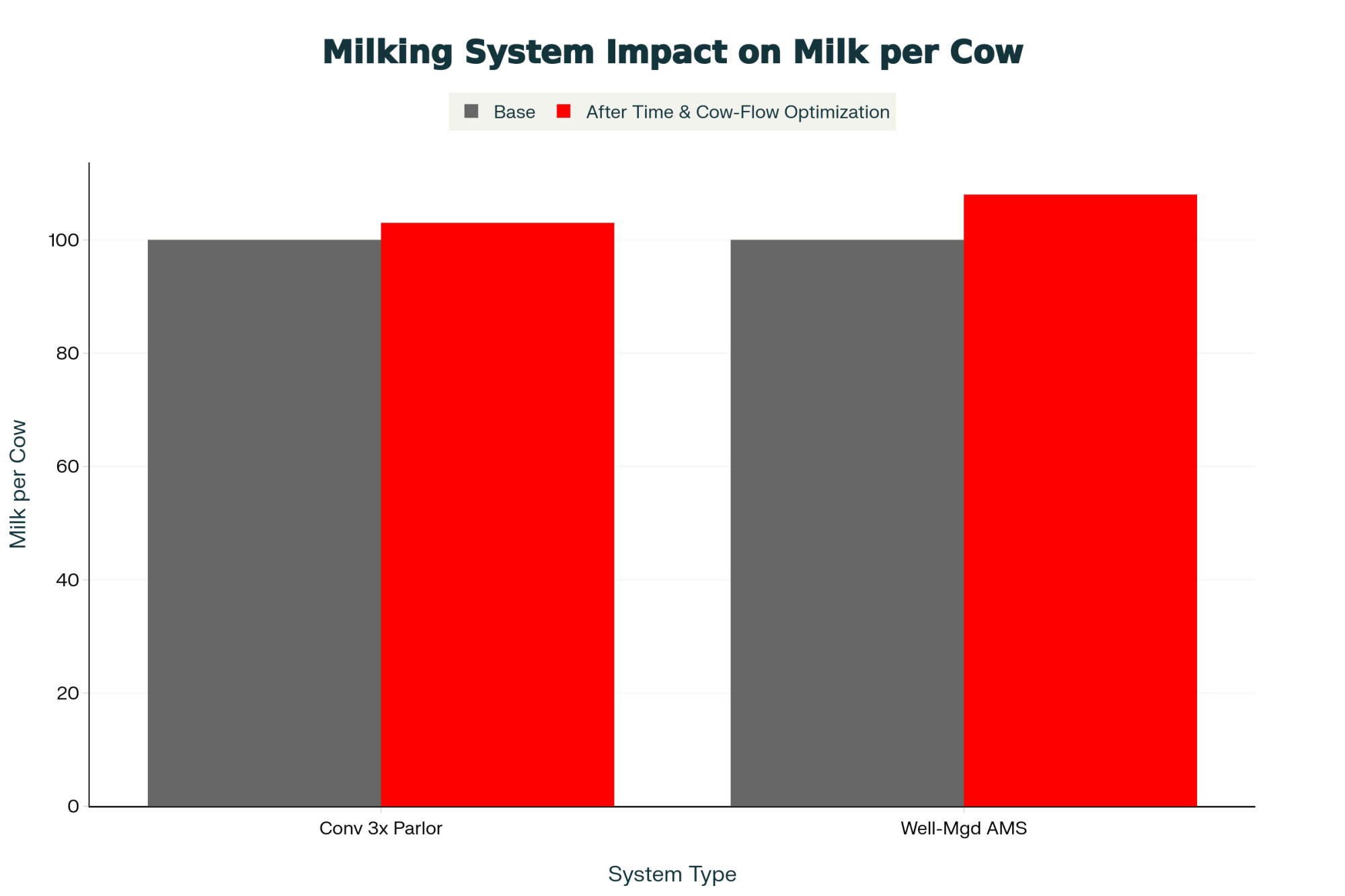





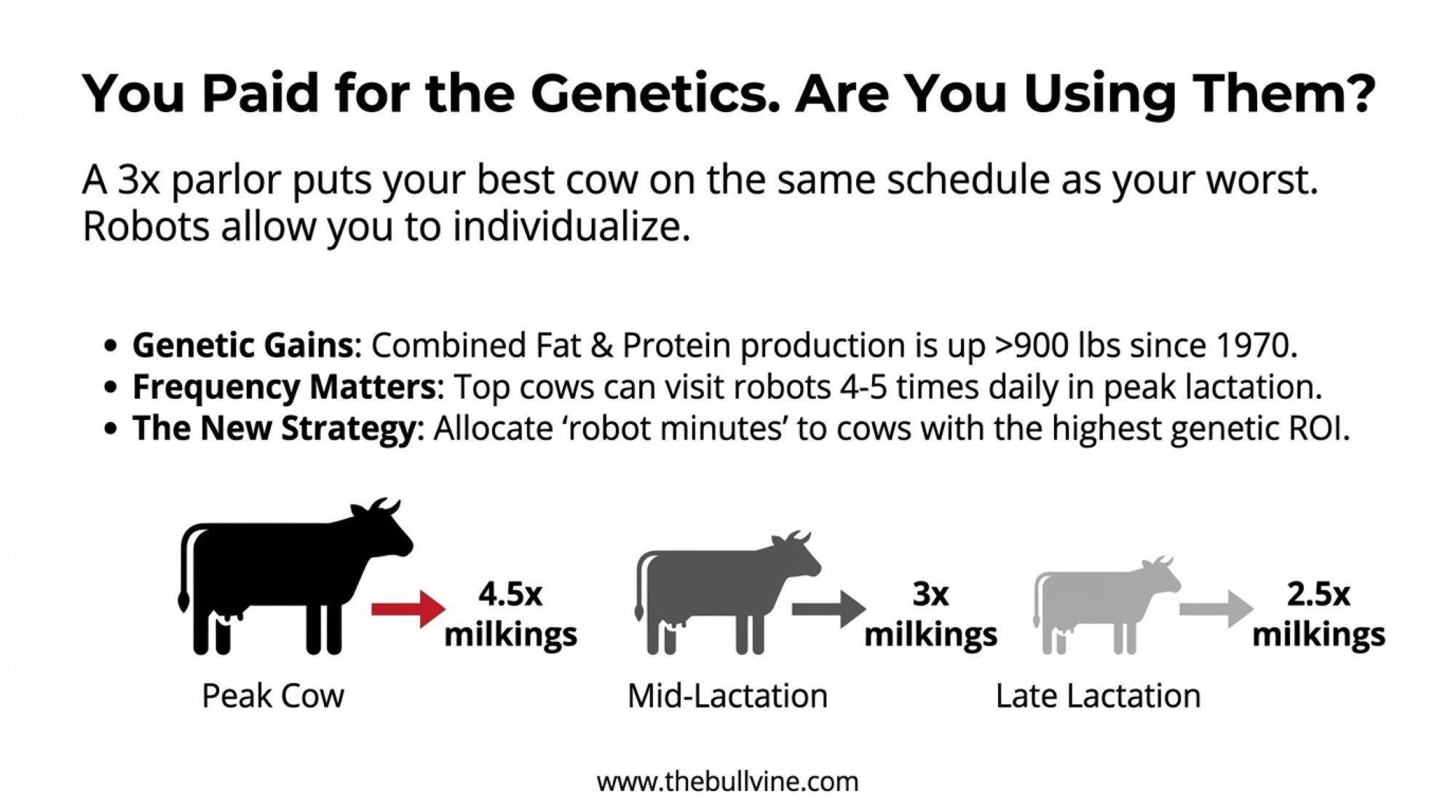


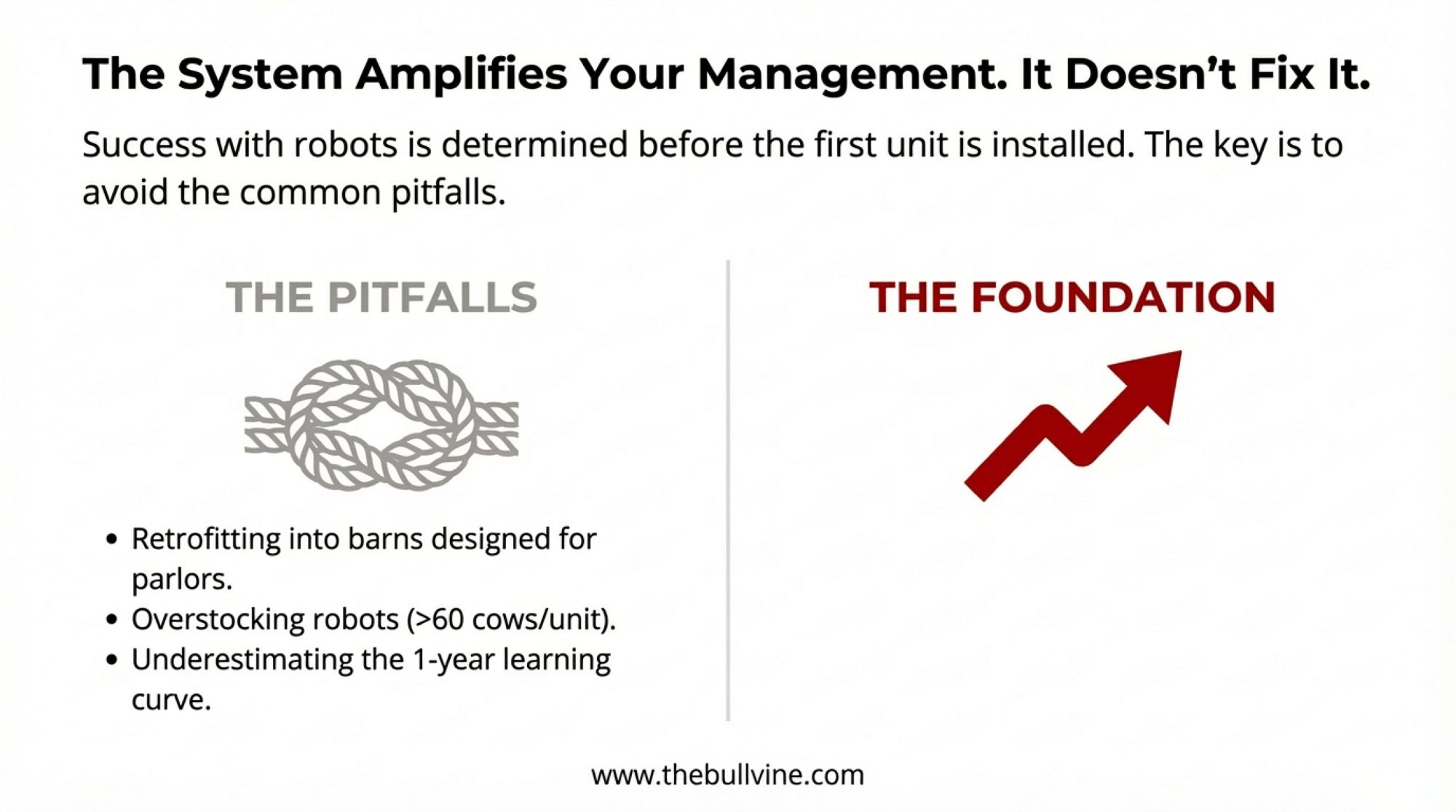













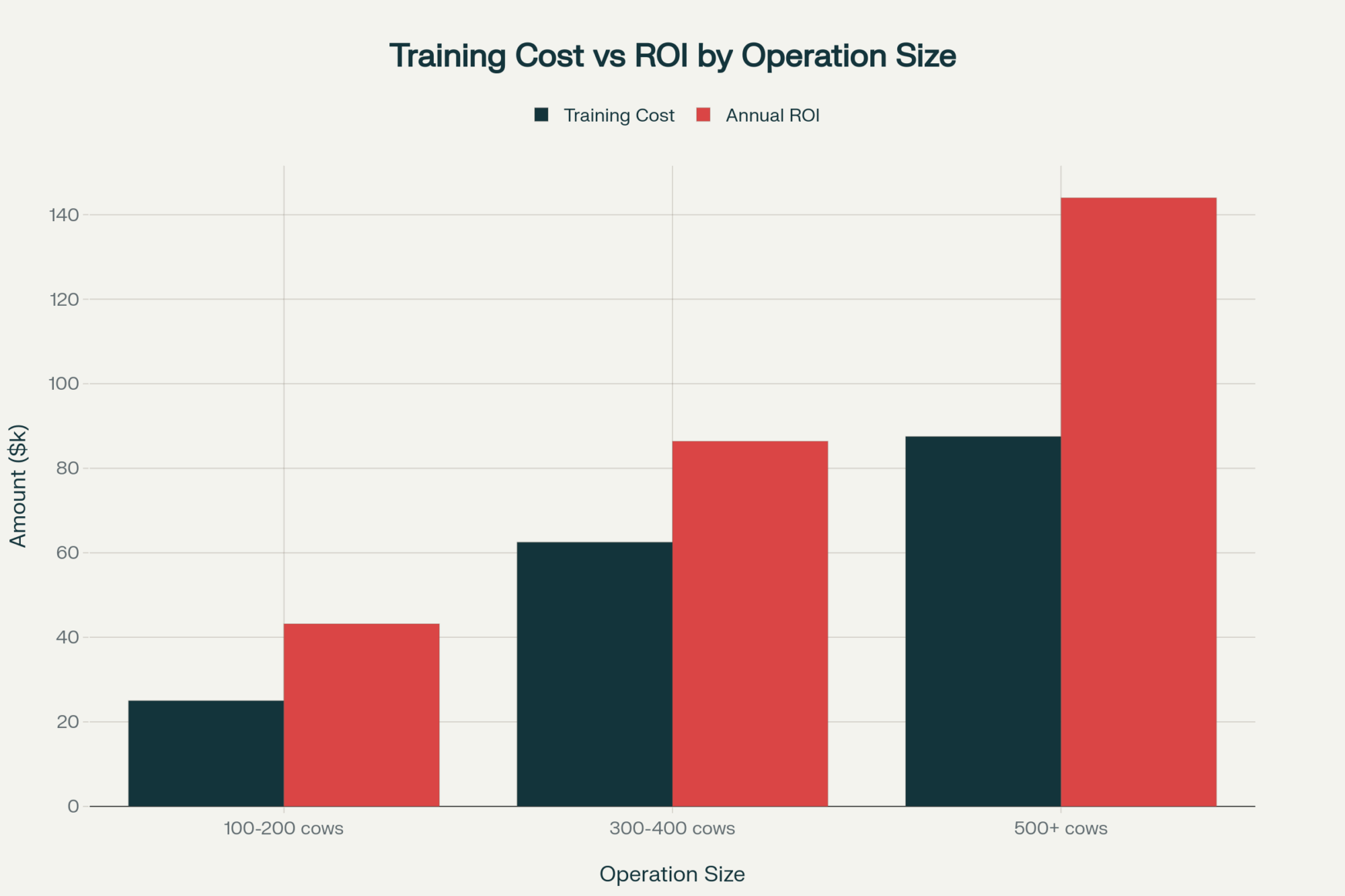




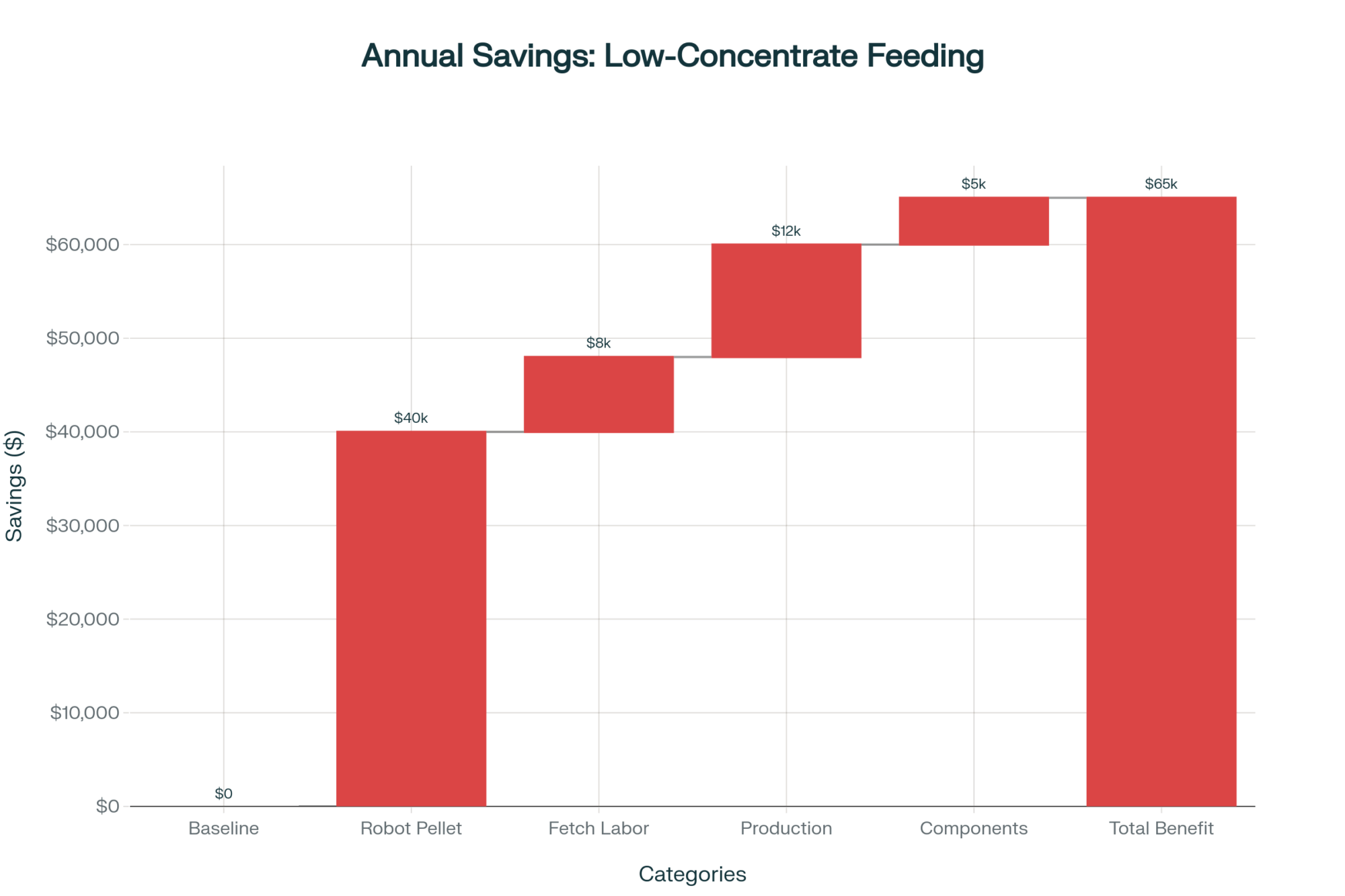
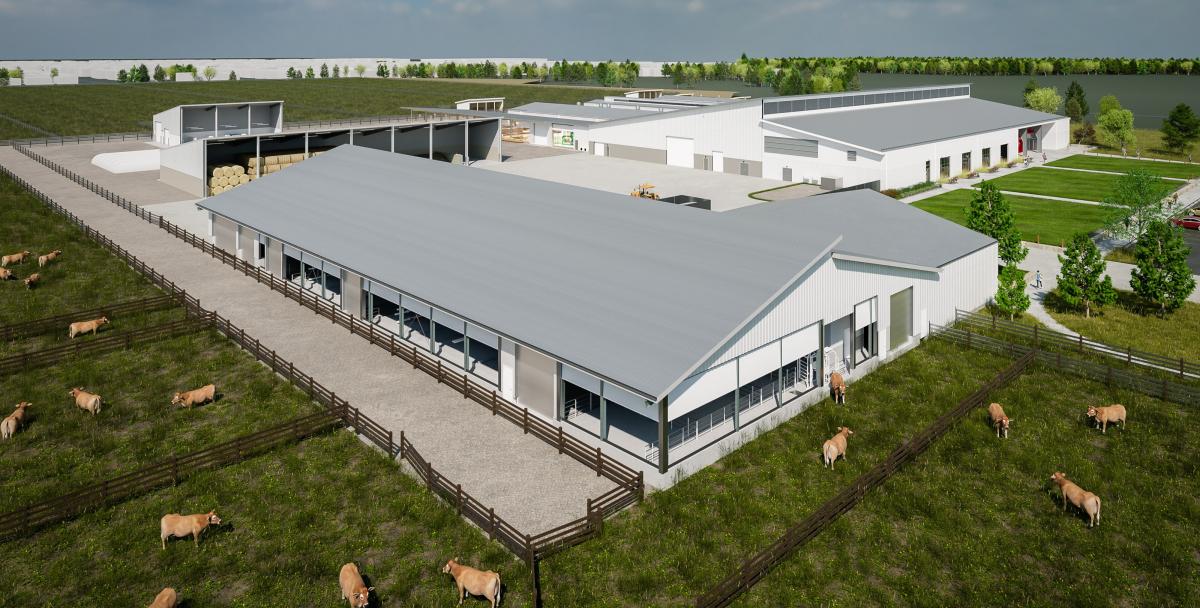
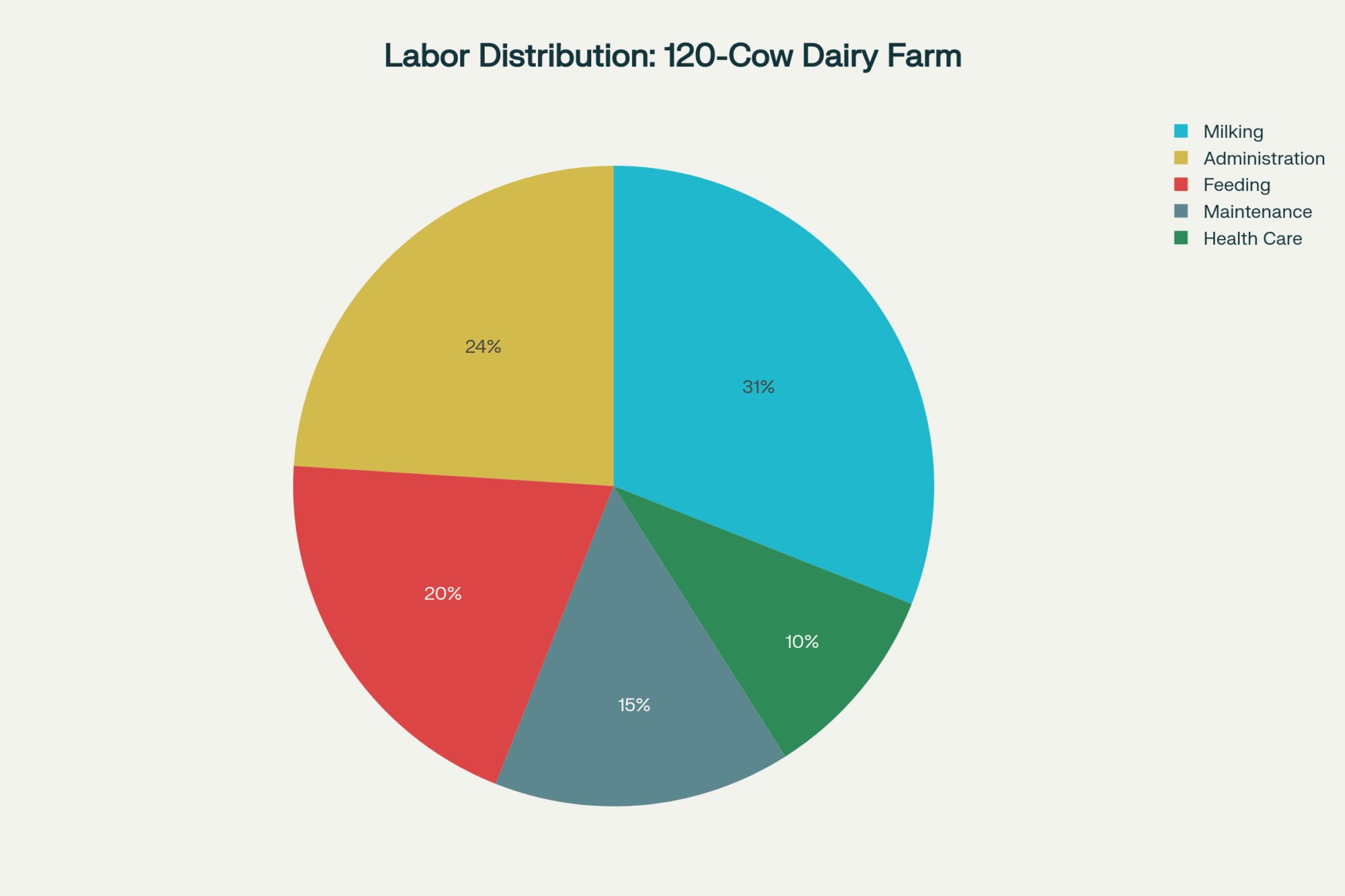




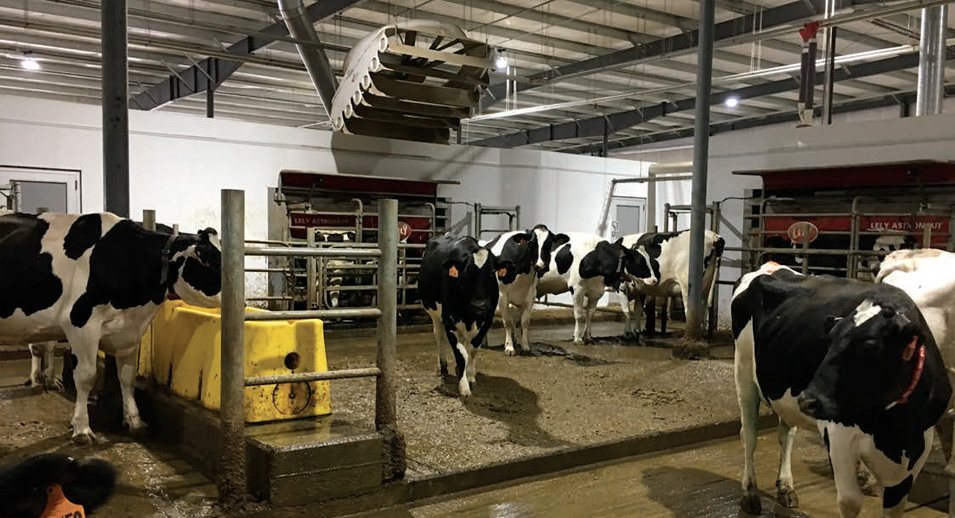



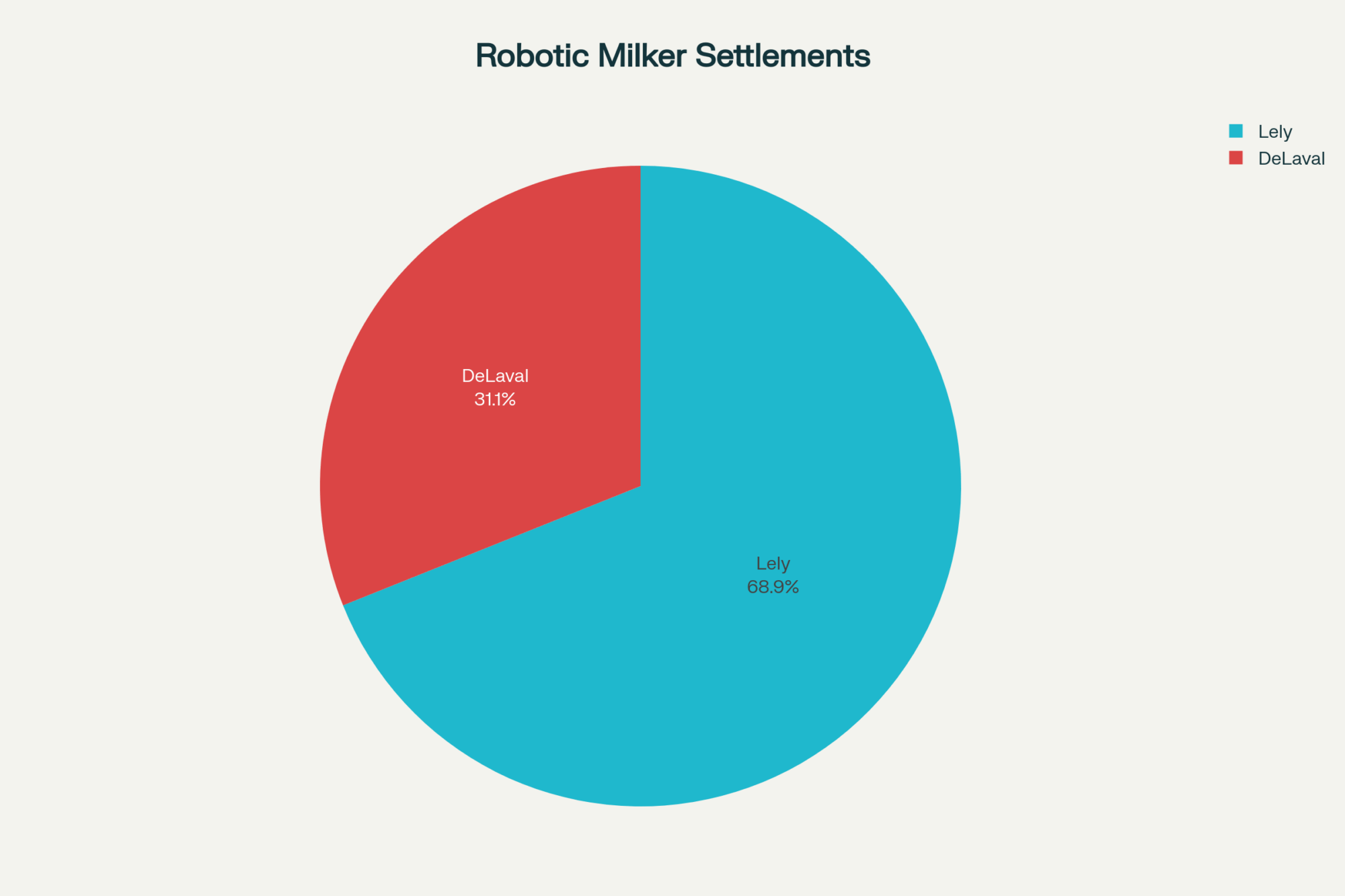
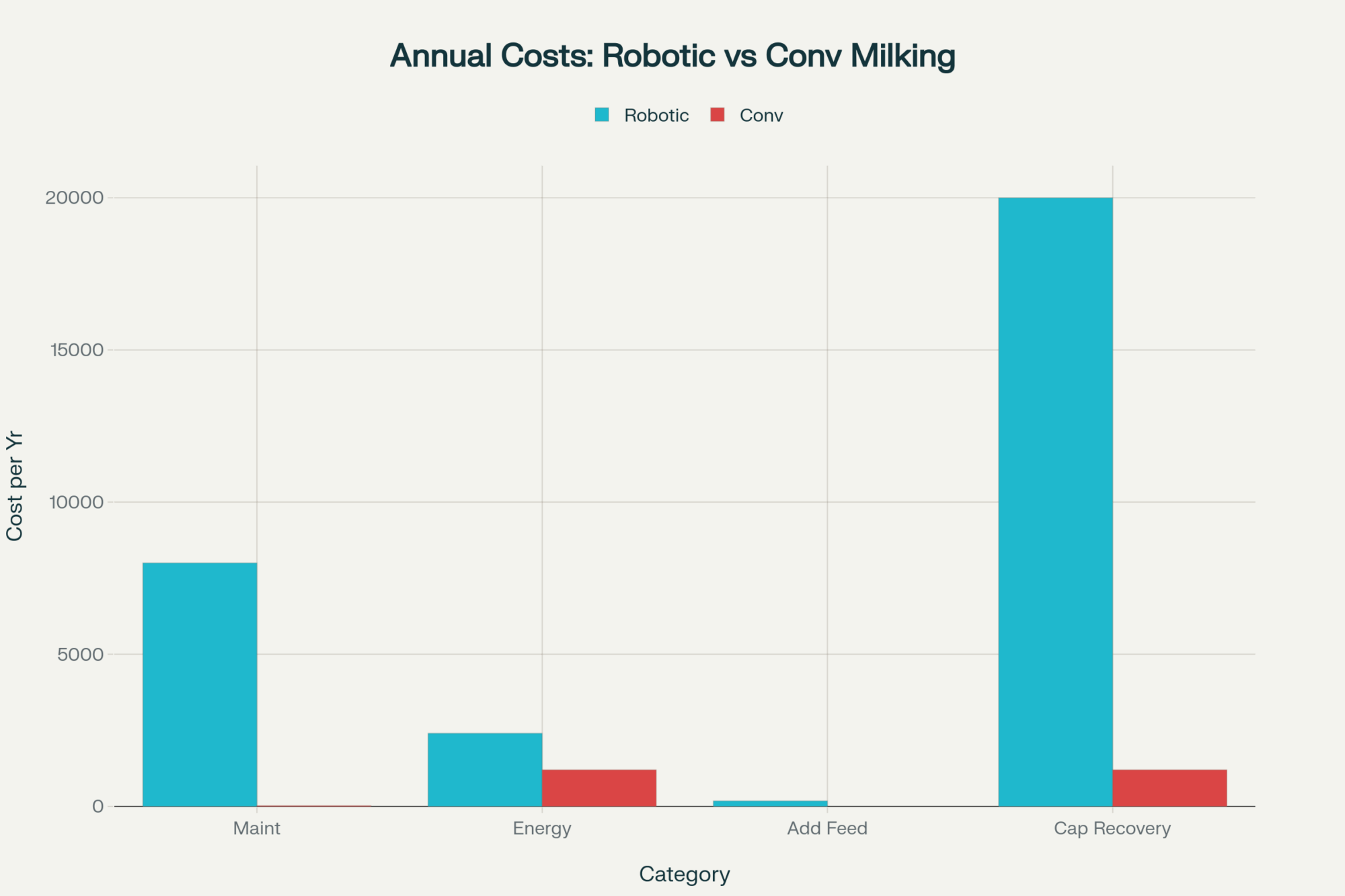
















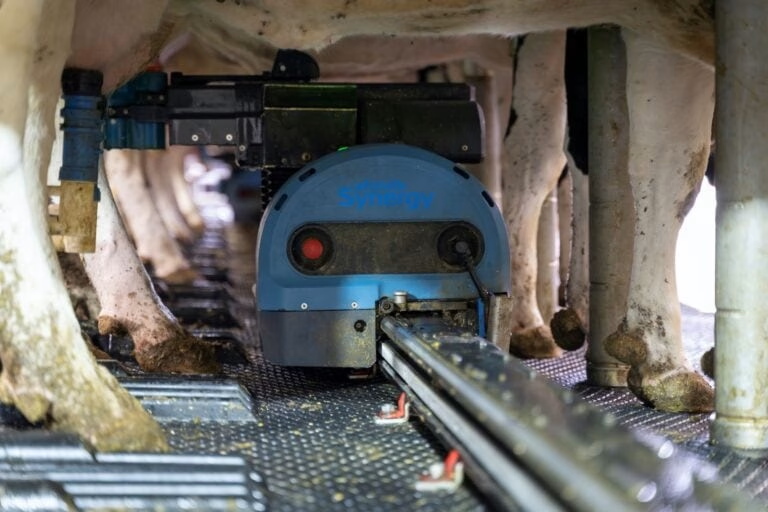

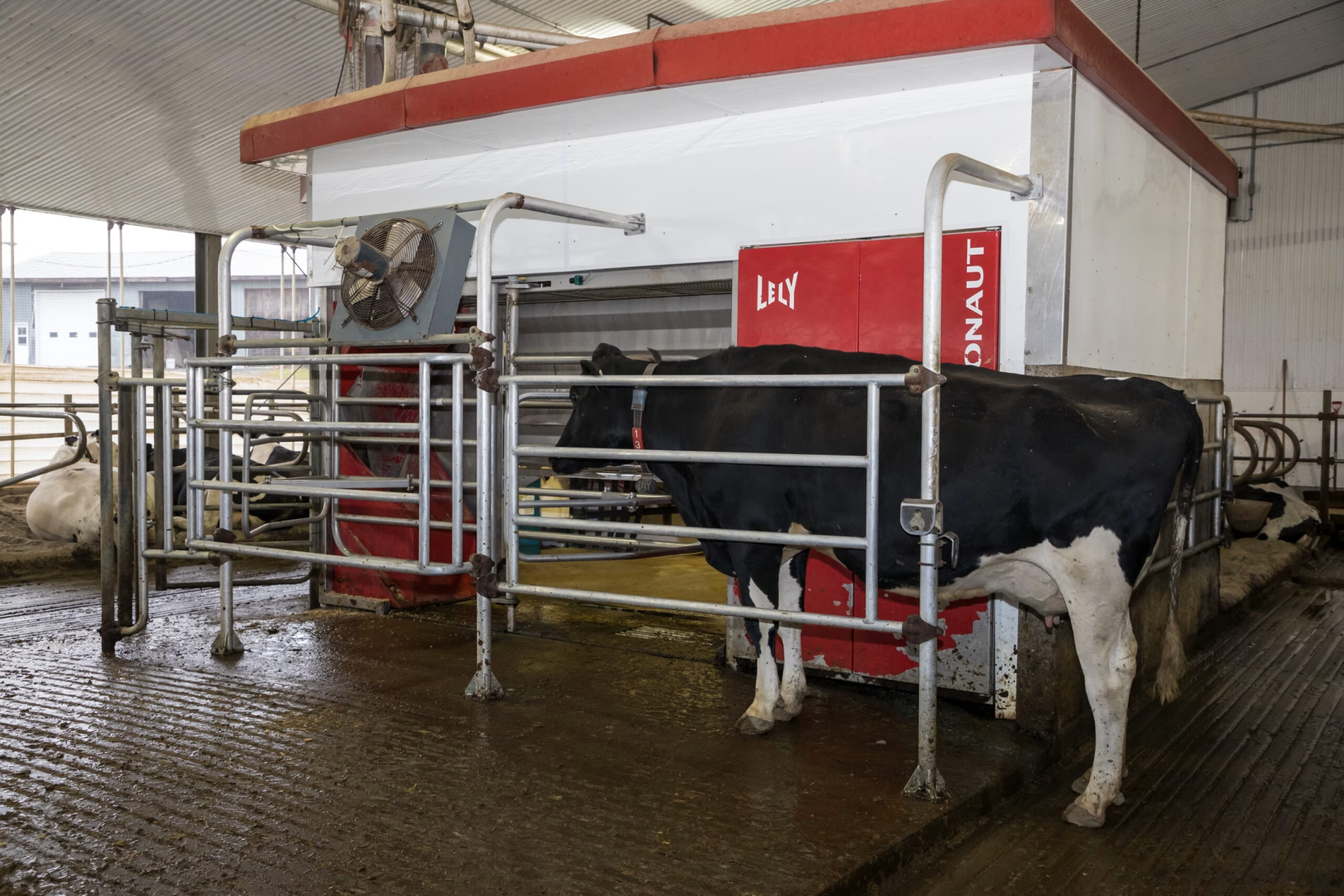











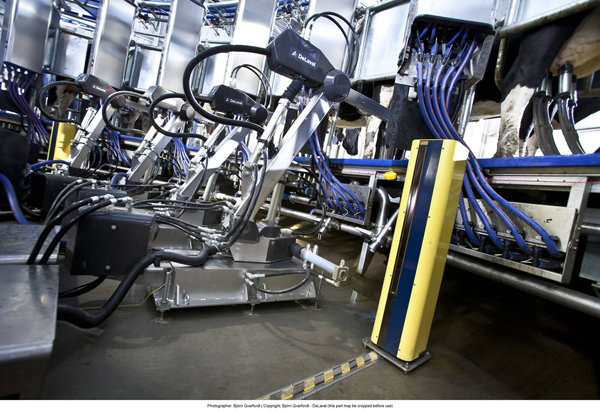

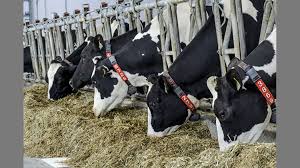
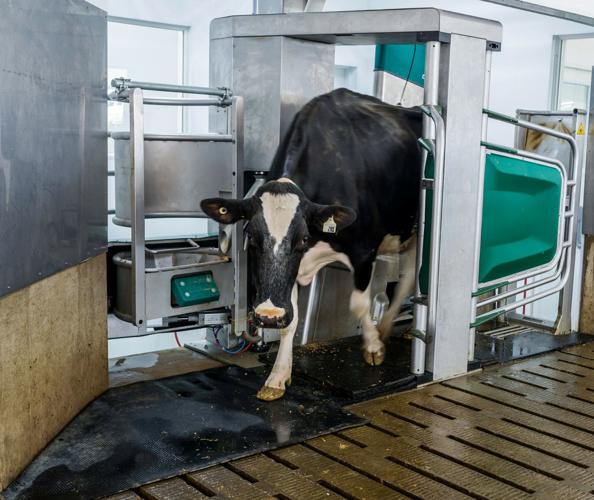



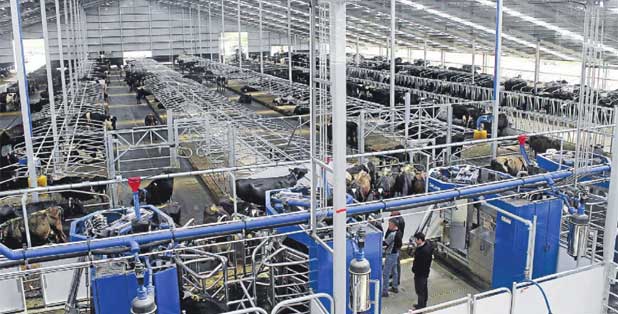

 Robots can take up the early morning and afternoon milking duties and free up the farmer to complete other important jobs on the farm, writes Jamie Gray.
Robots can take up the early morning and afternoon milking duties and free up the farmer to complete other important jobs on the farm, writes Jamie Gray.


